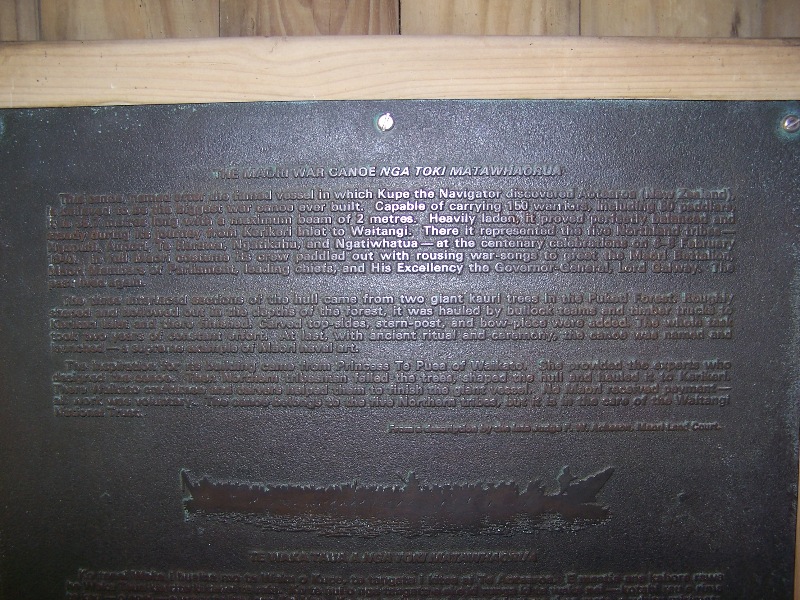

The writing on the plaque is as follows.
This canoe, named after the famed vessel in which Kupe the Navigator discovered Aotearoa (New Zealand), is believed to be the biggest war canoe ever built. Capable of carrying 150 warriors, including 80 paddlers. It is 35.7 meters long with a maximum beam of 2 meters. Heavily laden, it proved perfectly balanced and steady during its journey from Kerikeri Inlet to Waitangi. There it represented the five Northland tribes - Ngapuhi, Aupori, Te Rarawa, Ngatikuha, and Ngatiwhatua - at the centenary celebrations 6 - 9 February 1940. In full Maori costume its crew paddled out with rousing war-songs to greet the Maori Battalion. Maori Members of Parliament, leading chiefs, and his Excellency the Governor-General, Lord Galway. The past lived again.
The three interlaced sections of the hull came from two giant kauri trees in the Puketi Forest. Roughly shaped and hollowed out in the depths of the forest, it was hauled by bullock teams and timber trucks to Korikori Inlet and there finished. Carved top-sides, stern-post, and bow-piece were added. The whole task took two years of constant effort. At last, with ancient ritual and ceremony, the canoe was named and launched - a supreme example of Maori naval art.
The inspiration for its building came from Princess To Puea of Waikato. She provided the experts who designed the canoe. Then Northern tribesmen felled the trees, shaped the hull and hauled it Kerikeri. There Waikato craftsmen and carvers helped them to finish the giant vessel. No Maori received payment - all work was voluntary. The canoe belongs to the five Northern tribes, but it is in the care of the Waitangi National Trust.
From a description by the lat Judge F.W. Acheson, Maori Land Court.